Xenoblade Chronicles X Review
Xenoblade Chronicles X is perhaps the most epic game to ever grace a Nintendo console, Zelda series notwithstanding. To be honest, it even gives that flagship franchise a run for its money, certainly when it comes to scale. There were more than a few moments of frustration, a healthy dose of head scratchers, and some features I felt could have been executed better. Yet when all’s said and done, the grandiose nature of this game, the deceptively elaborate and well-crafted mechanics, the memorable characters, and most importantly – the enticingly addictive gameplay, allowed me to overlook the game’s few blemishes for the most part. And even though in the back of my head, I couldn’t quite shake that nagging feeling that this game held some unrealized potential, I’d be lying if said I didn’t vastly enjoy the enchanting experience Xenoblade Chronicles X offers as a whole. At the end of the day, it still stands out as a downright charming action RPG that is one of the most fun and interesting I’ve played in recent memory, particularly when it comes to Nintendo offerings.
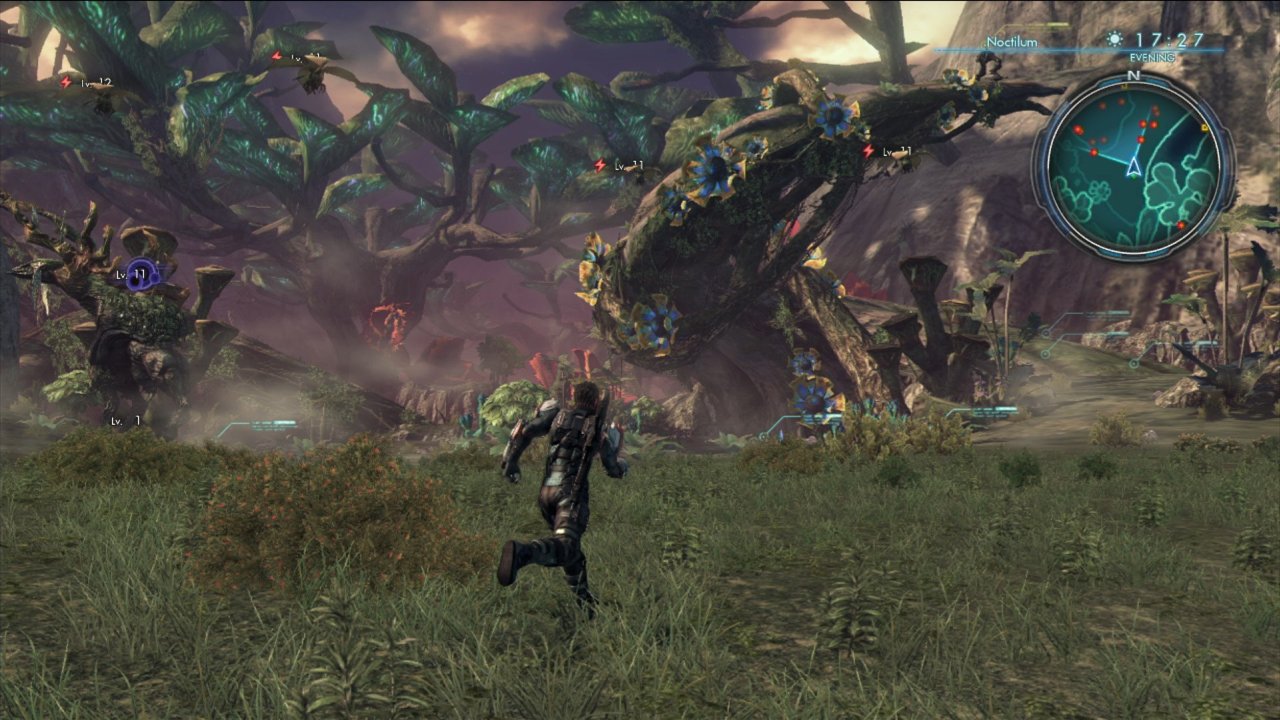
As rich and enthralling as the game is, there isn’t a whole lot to be said about the story, at least in the early goings. However, once you’ve delved several hours into the game, it begins to pick up, mainly in the form of story missions, as well as some of the so called “affinity quests”, which exist as a means of both fleshing out characters as well being a key component within the game itself. You play as Cross, one of the few surviving earthlings who is forced to start anew on a foreign planet known as Mira, after Earth has been caught in the crossfire and carnage of alien warfare. While Mira looks pretty and unthreatening, it is full of danger, and the intimidating aura of the unknown constantly looms like a dark ominous cloud.
A variety of colorful and imaginative life forms are crawling about, many of them hostile, and some of which pose a threat to this last collection of human civilization, which is now concentrated in a gigantic city known as New LA. This human habitat is both familiar and charmingly creative, as it resembles Los Angeles in style with a futuristic flare. Gazing upon its giant UFO-like exterior from vast distances when roaming the plains is a pretty neat sight to behold, and adds to the unique character of this location in which you will end up spending much of your time.
Sitting vulnerably in the middle of this strange new world, this portable colony exists as a last bastion for humanity while many of its inhabitants work together to learn about Mira, its native creatures, all while retrieving parts of their only surviving ark (essentially a sort of giant space lifeboat), called the White Whale. While the game obviously focuses on you as the primary hero in the game, you are basically one among many, working in tandem with a group called BLADE, which acts as a sort of heroic defense force and exploration team for humanity on the planet.
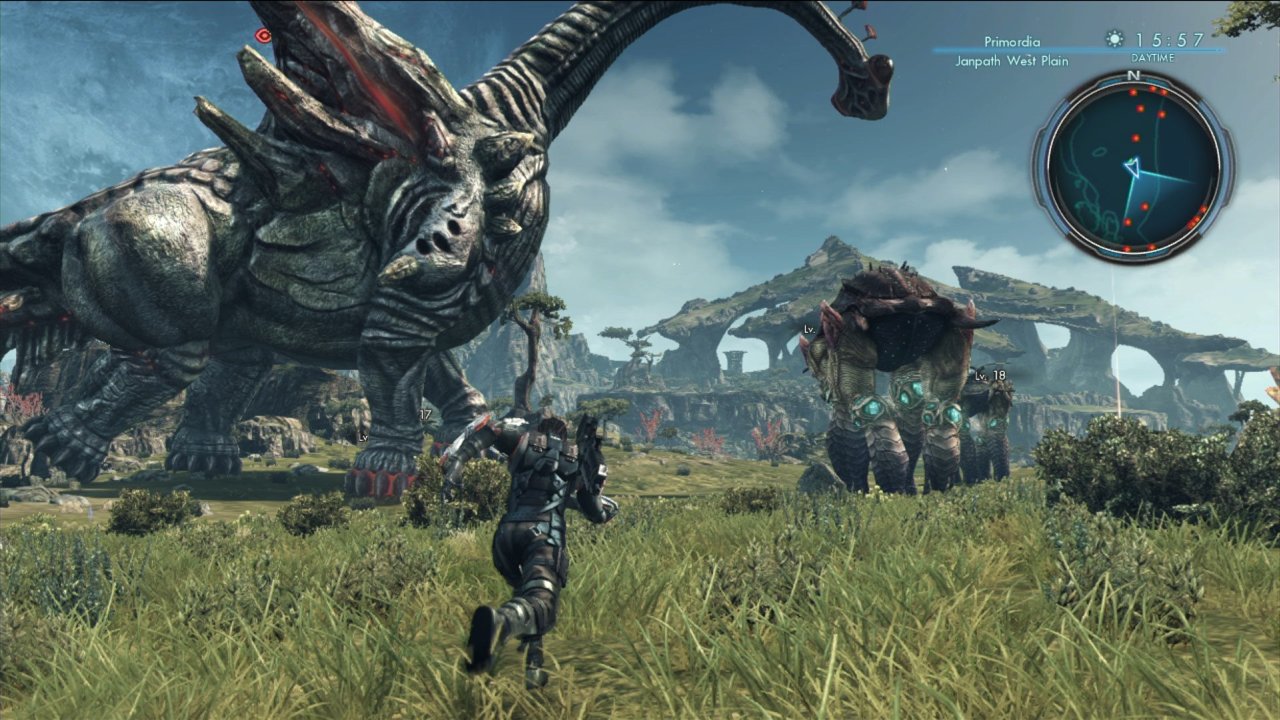
Aside from the main story, there is a healthy dosage of peripheral tidbits regarding the backstory of the various locations and characters, and you’ll find yourself yearning to uncover more, not just of the awe inspiring environments, but from the story behind them. And while I found some characters’ stories to be a bit dull, the game wisely throws in some colorful dialogue to offset some of this, further enhanced by frequent use of surprisingly good voice acting and some distinct, memorable personalities. Aside from the liberally placed cutscenes, and the forced (but nonetheless enjoyable) story missions, the game allows a degree of open world freedom not typically seen in a Japanese style RPG. As a result, the gamer can largely create their own narrative. If you so chose, you could forgo many of the emotionally charged affinity and NPC quests scattered throughout the vast lands of Mira and focus on your more typical fetch quests. While these will eliminate much of the cutscene fluff, I often found these to be a little too simplified, as they typically consist of searching for random items or materials, or taking out specified enemies. To further add to the frustration, the game, for some odd reason, usually chooses not to offer you the convenience of pinpointing these targets on your map, making for an often painstaking process of going on a wild goose chase to seek out these desirables. Still, the missions offer a nice change of pace on occasion, providing an excuse to wander off from the game’s imposed narrative and do your own thing for a bit, allowing you to take in the rich environments as you venture out.
Xenoblade Chronicles X is also deceptively deep and complex in terms of the mechanics and customization, which will constantly be throwing curve balls at you just as you think you’ve fully wrapped your head around the game. Admittedly, I had stumbled upon more than a few subtly presented features and functions that had me saying “oh, I can do that?” several hours into the game. I’d classify this as both a strength and somewhat of a weakness. It certainly is a refreshing change to be left to use your own mind without having a game constantly hold your hand or bombard you with tutorials. At the same time, odd moments were so frequent that they presented a somewhat cryptic and confusing feel that sometimes bogged down an otherwise outstanding experience. This is probably the first game in many years that I can honestly recommend giving a good read through at least some of the elaborate manual, at least if you want to get a real feel of what you’re doing off the bat. That said, you will still probably get a healthy dose of entertainment from this action RPG even if you are simply coasting along with even a partial grasp of it workings; it’s just that the more you understand about the mechanics and features, the more enjoyment you’ll likely get out of it.
Perhaps the prime example of the sometimes intimidating complexities interwoven into the otherwise appealing gameplay is the unique battle system. Drawing some similarities to the original Xenoblade for the Wii, the game utilizes a system of action and turned-based style working in tandem; the turn based mechanics coming in the form of the cooldowns which place limitations on how often a move can be used. The various moves, known as “arts”, are a mix of long ranged weapon based attacks, melee strikes, buffs, and debuffs. There are also “auras”, which are a sort of glorified buff that requires the use of “tension points,” or TP, which is essentially the Xenoblade equivalent of mana. By the way – as it seemed to be a reoccurring theme with me – I didn’t find out that TP could be used to revive a player until I was well into my adventure. That would have been useful to know, but I digress…
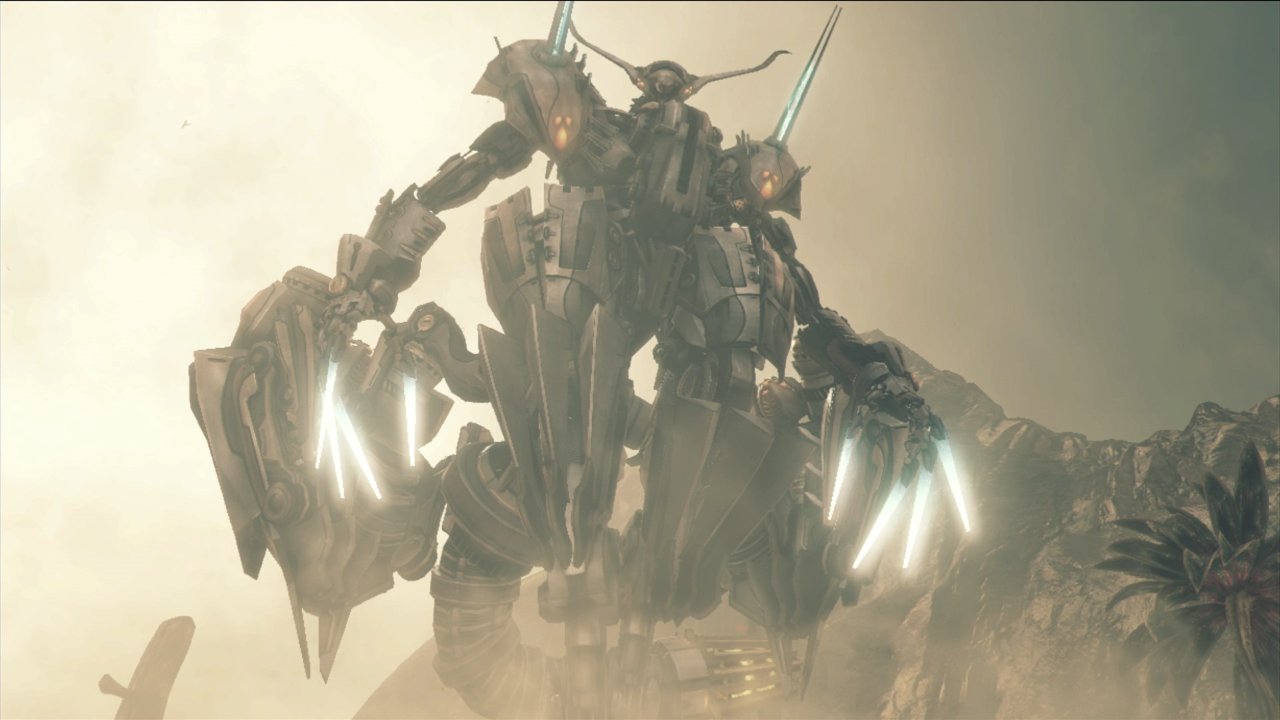
Certain arts will bring about negative effects on enemies, which help set the stage for a tactical advantage through the usage of boosting the effects of additional arts, once one various conditions are met. For instance, an art may cause an enemy to become toppled in certain instances. This will then increase the usefulness of, say, the flame grenade art, which provides increased damage only when an enemy is toppled.
Similar to this mechanic is the “soul voice” feature; a useful tactic that grants boosts of attack power, defense, or other buffs when certain actions or conditions in battle are triggered. This element adds a layer of strategy to a seemingly simplistic fighting system, and enables the player to gain a tactical advantage over their opponents, many of which otherwise prove to be out of your league. These soul voices can even be customized and tinkered with to the user’s liking. The process seems intimidating upon first glance, but it proves a simpler concept than it appears in the menus.
In addition, there is a corresponding “soul challenge”, which appears abruptly upon the successful implementation of soul voices during battle. This shows up as an outer white ring encompassing a blue circle. It offers bonus rewards such as healing and increased damage upon hitting the B button at the proper time as a ring moves through these color-coded circles. On top of all this, there are also battle commands which can be used to at least partially mandate certain actions of your CPU controlled party members. These actions include backing off an enemy, assembling to your position, or concentrating fire on a certain target.
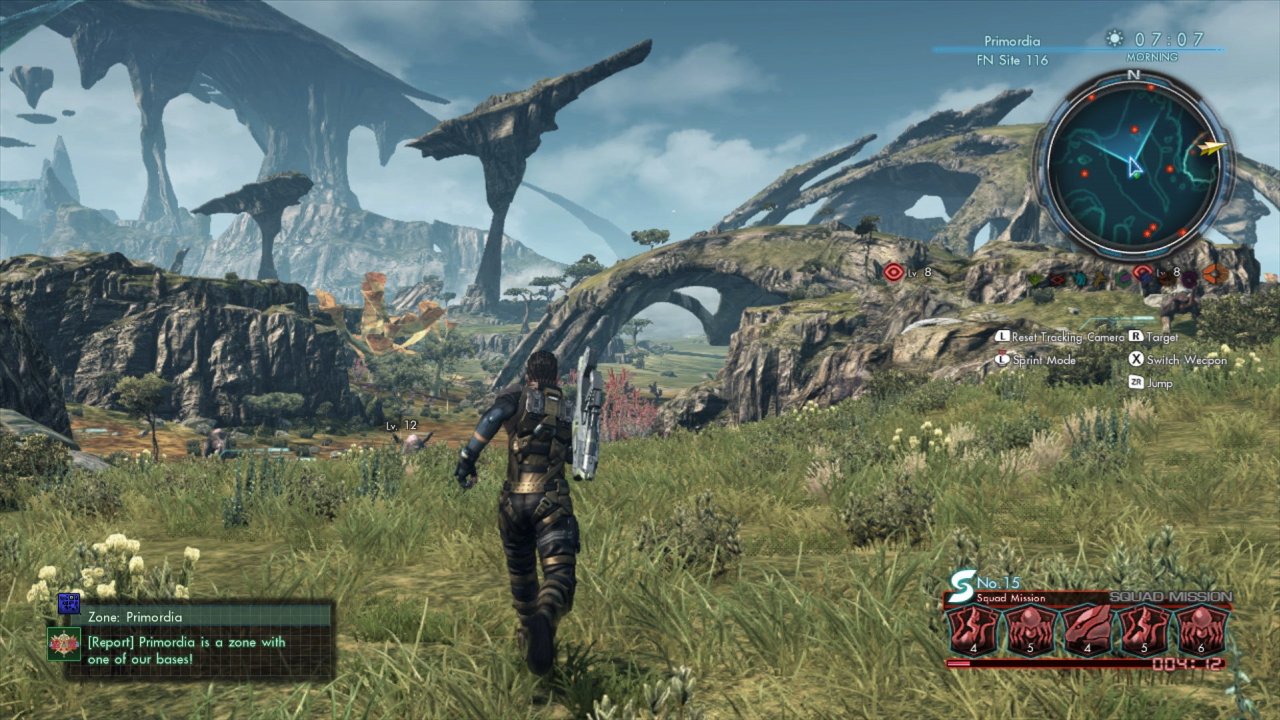
Battles often become a juggling match of keeping an eye on various aspects from the cooldown of your arts, the prompts of triggered soul voices by either you or your party, as well as the behaviors/current state of your opponents. It’s essentially a game of organization and time management; making the most out of your actions by utilizing them at the right time or under the right circumstances. I found battles to be an overall thrilling experience, and though I ended up spending a good chunk of my adventure engaged in battle, it rarely felt old and I almost always had fun with it. It proves to be a fantastic blend of adrenaline-pumping action and strategy that makes for a well-rounded gaming experience.
To further boost your power and overall effectiveness in battle, be sure to frequently check and tinker with your party’s equipment and abilities, as more arts will be unlocked depending on your chosen class. These, along with permanent class skills, can be upgraded, which will prove essential to keep up with those higher level baddies that are somewhat randomly placed throughout. Weapons can be obtained through shops in town, or as random loot from enemies, which can also be upgraded thanks to augments. These are nifty little tools of customization, and are unlocked by spending the sort of universal resource of Mira, appropriately called “Miranium.” They act as a sort of weapon/armor equivalent of a player buff, with traits such as increased critical hit chance, decreased cooldown, and attack boosts.
All of these attributes and layers of customization are difficult to take in all at once, especially when they are typically not explained very well, if at all. Just like other aspects of the game, some of these took quite some time for me to even notice, let alone master. However, the game for the most part allows you to coast along to a certain degree without needing to fully grasp every little detail included. By throwing a relatively even distribution of some lower level enemies no matter where you set forth, for instance, players can generally opt for simpler, less intimidating battles and thus resort to more mindless art spamming, utilizing a less tactical approach if they so choose. Just don’t expect to progress as quickly.
On the flip side though, this uneven and random distribution of enemies can also lead to some frustrations and slow moments when seeking optimal level grinding. There will be moments where all you can seem to find are the smaller, lower level enemies that are barely worth your time engaging, despite venturing far from New LA. And on the other hand, sometimes the game will unfairly and inexplicably fling large concentrations of overpowered, higher level enemies your way at earlier parts of the game. This can be inconvenient to say the least when these enemies are hostile, and they often seem to roam in spots that block off a particular area you require access to for a quest you are looking to finish.
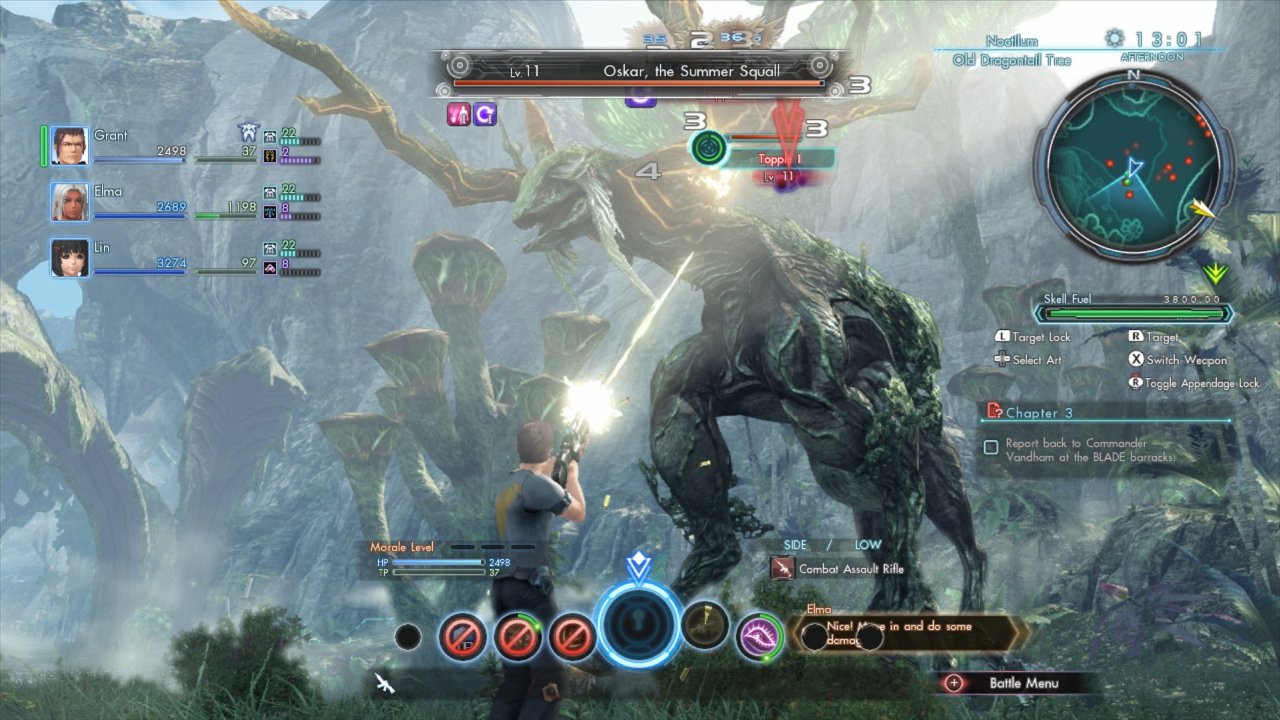
Speaking of the enemies, they offer their own share of subtle complexities as well. For example, most come with different appendages or body parts that can be targeted, some of which can be hacked off after enough fighting, and this can actually change the dynamic of the battle as it can often cripple the enemy, and they can no longer use that appendage to launch specific attacks. This adds yet another factor to think about when engaging in battle. Besides different species and mechanics, monsters will range in behaviors as well. You have your friendlier creatures that will mind their own business unless you make the first move, and the hostile enemies. The latter are more frequent and more powerful during the treacherous Mira nights. Some will come after you when you cross their line of sight, and others by a mere sound they pick up on. The monsters of Mira present a massive variance in size, appearance, and mannerisms that parallel the vastness of the game itself, and it was a joy to see the colorful variety of these imaginative beasts and intelligent alien life forms. On top of your typical breed of alien creatures, there are also super powered monsters, called Tyrants. These are typically a lot more tough, provide more ample reward, and are often used as objectives for various quests. This is where online multiplayer comes in handy, as you can team up with either friends, or randomly selected players to help you take on these tricky beasts.
The game takes on a bit of a Monster Hunters vibe when playing through various online quests, particularly when you’re all squaring off against those battle-hardened Tyrants that seem to take forever to bring down. It is a fun change of pace and adds a new element of excitement to an already thrilling experience. If online play isn’t really your thing, the game still enables you to stay semi-connected with the Xenoblade community through various ways. You will eventually be prompted to join a “squad” upon startup, which essentially acts as a sort of online community. While in these squads, you can indirectly participate in missions and read message postings while still going off and doing your own thing. It is a semi-amusing feature I suppose, though one that didn’t feel very necessary. The squad missions generally consist of killing groups of specified types of enemies, though I often found it difficult to determine which monsters I was required to kill.
Another neat online-esque feature is the ability to scout NPC versions of actual player creations, who you can basically borrow for a short period of time, swapping out a less desirable NPC in your party. You can even be scouted yourself, and should the avatar version of yourself fight well enough, you can redeem rewards at the scout console found in New LA. The online features generally feel like an afterthought, but the game is so massive, they largely don’t feel needed regardless. Still, they offer a unique change of pace and sense of connectivity for those who are seeking it.
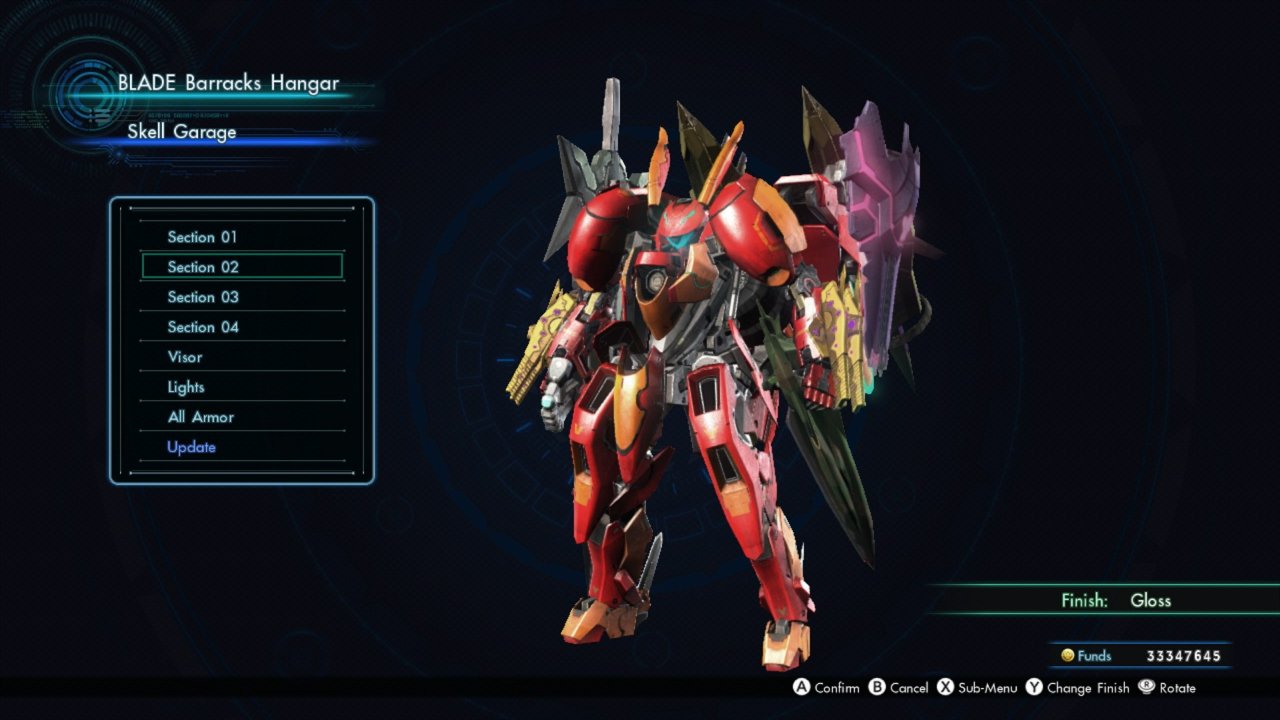
Oh, and I feel I would be doing the game a disservice by not at least mentioning the giant mech fighting machines that assist you in battle against some of the larger enemies, known as Skells. In all fairness though, the game itself seems to take forever in getting around to them, as you don’t even get the opportunity to enjoy strapping into your first Skell until several chapters into the main story. This is a bit strange considering how much focus was placed on these badass looking machines in the various trailers and game demos. I did however, found them to be a little more trouble than they worth anyway. Don’t get me wrong, it was a joy to go joyriding for the first time, and it certainly makes travelling quicker and more enjoyable when taking to the skies or rocketing across the plains of Primordia or the deserts of Oblivia in vehicle mode. They also succeed in adding a new feel and dynamic to enemy battles, introducing a few new features like the ability to bind enemies, damaged Skell appendages, and the action-oriented “cockpit time”. Yet, you’ll find yourself worrying about keeping tabs on the fuel, which burns through relatively quickly, as well as your damage received. On top of this, they are also expensive to buy and overall a bit of a burden to maintain. Like the online play, these too come off as a bit of a tacked-on, rather than a core aspect of the game that you might expect.
Being a Wii U exclusive, the gamepad features should also be touched on. The screen on the controller essentially takes on a function not unlike the second screen of the Nintendo DS; that is to say that it adds a little something extra without becoming too gimmicky, or too much of a burden. The list of text blurbs and non-verbal communicative actions the screen provides help to grant at least some semblance of communication when playing with others, as the game does not come with voice chat.
The gamepad screen is primarily used as a detail map system, which is where it shines the most, as you’ll probably find yourself needing to scope things out regularly as you travel. Destinations for quests are marked on this map, as are a series of symbols on each “quadrant” which the game compartmentalizes each continent of Mira into. These symbols, like many aspects of X, are quite cryptic, and I still haven’t figured out what some of them mean, but I’d wager that they represent key points on the map that range from new quests to treasures. Oh, then there are mining probes, which are also marked at various points throughout Mira. Once you’ve reached these spots, you are given the opportunity to probe the designated site, which allows you to syphon precious Miranium and other resources, as well as reveal information and terrain from the surrounding area. While somewhat useful, it is an odd feature to say the least, and comes across as a bit of afterthought to shoehorn in the gamepad’s screen and touch features. Make no mistake though, the touchscreen functionality can come in handy at times, particularly when scrolling around the map or clicking conveniently on designated fast-travel spots.
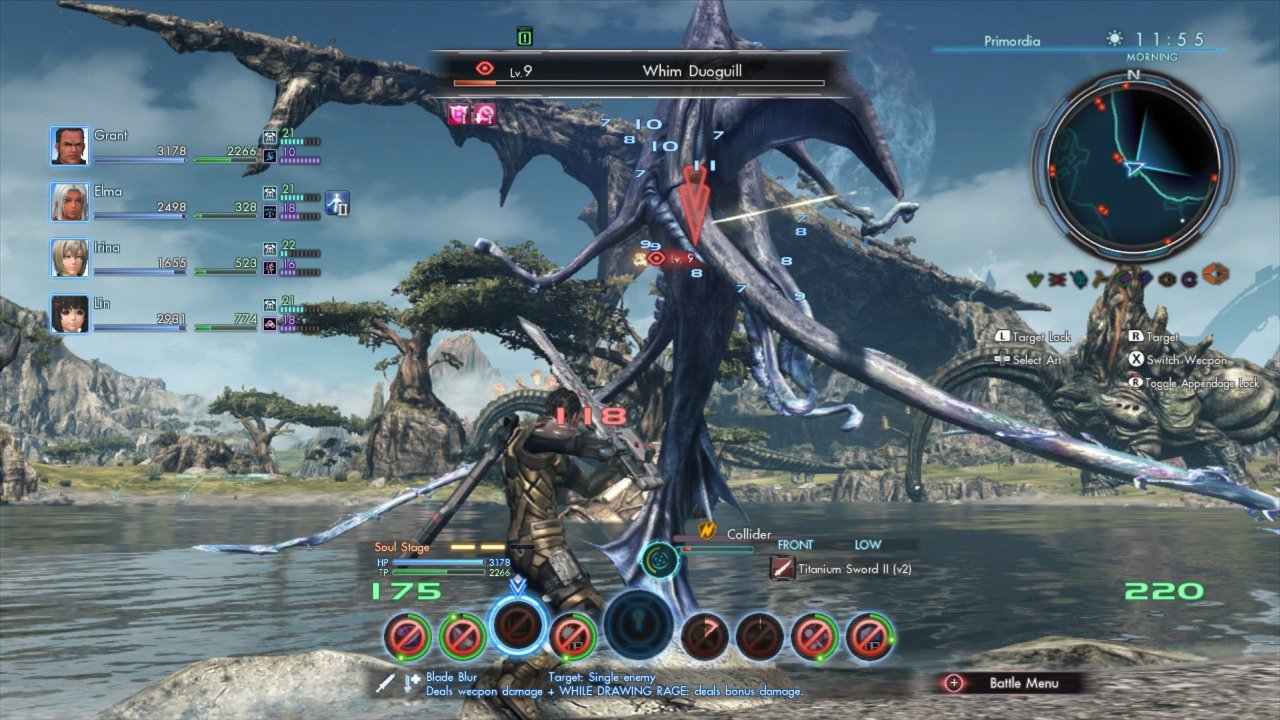
I was a little concerned as to how the Wii U’s bulky controller would feel for a complex RPG such as this one, but it works and feels surprisingly decent for the most part. Aside from some tricky button sequences to access a few of the more cryptic in-game commands, the controls just feel right. And even if you happen to swear by more traditional controllers, the game supports the pro controller as well. Xenoblade Chronicles X also allows for off-TV play, a feature that I usually place value in, but for a game like this, I wouldn’t bother. The main reason for this being that the text, annoyingly small and difficult to make out as it is, becomes nearly unreadable on the somewhat fuzzy and relatively tiny screen of the gamepad. The game is full of convoluted bits of information and has a lot to keep track of, and this amount of visual information to process just doesn’t lend itself to a small screen.
Besides, these slick and gorgeous graphics are best appreciated in HD, and I have to say, this is one of the nicest looking games to ever grace a Nintendo console. The textures are crisp, the draw distances are impressive, and the overall style treads the line nicely between a gritty semi-realistic look coupled with colorful and diverse fantasy environments. Besides roaming the robust colony of New LA, you’ll spending the vast majority of time trekking through one of five continents. These locations look so magnificent and hold such a distinct and unique style from one another, particularly the later ones, that you won’t likely care about the lack of diversity within them.
The musical score doesn’t come with a particularly huge variety either, but those tracks that do exist generally serve their purpose well, consisting of many rich melodies that are friendly on the ears. They help add to the feeling of adventure and grandiosity, coloring things with some emotion and generally act as a nice compliment to the environments they coincide with in both style and character. The main battle music is a pretty catchy, albeit strange hybrid of rock, hip hop, and Japanese pop, the intensity of which meshes with the adrenaline-pumping battle sequences quite nicely as well.
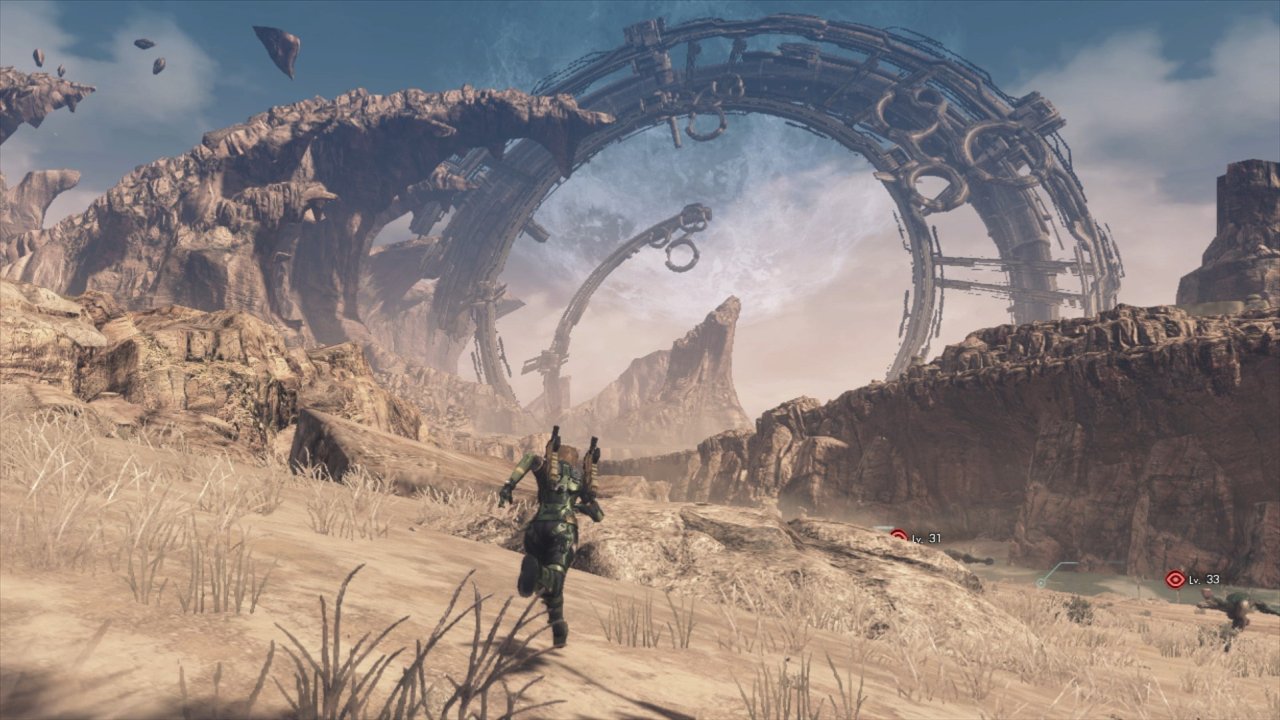
On the whole, Xenoblade Chronicles X is a very well crafted action RPG that provides more and more content the further you delve into it. The game can be learned and enjoyed relatively quickly at least on a basic level, and the enjoyable, generally fast-paced gameplay makes it inviting to more casual RPG fans. At the same time, it embeds subtle mechanics and features that are quite rich, ensuring that the diehards will get much out of it as well. Xenoblade Chronicles X is not without its flaws with ambiguities that drag the game down at times and frustratingly keep it from reaching a truly elite level of quality. Yet, it still provides a superb and addictive experience to those who have the patience to learn the ropes and deal with the occasional quirk and cryptic aspects.
